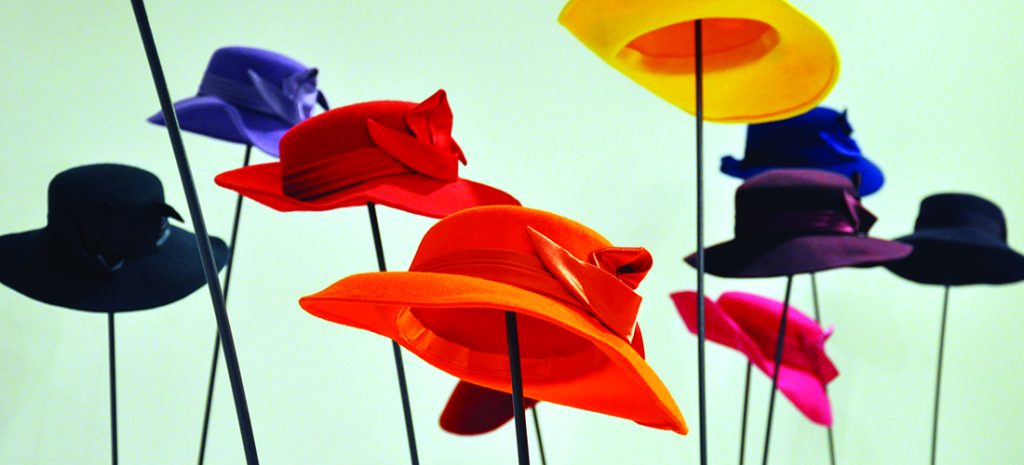Serendipity

Hats Off to Hats
With a little help from the royal family
By Ruth Moose
I miss wearing, seeing, buying hats. Queen Elizabeth always wore the most elegant, most becoming, absolutely stunning hats. Hats that matched her outfits. Perfect hats. Of course, she did have at her command and fingertips the finest millinery in the land. And she did them proud. What are the chances a newly crowned King Charles III can do half as much for the humble hat?
My grandmother, a country preacher’s wife, owned two hats — one for summer, one for winter. Summer’s hat was a flat pancake of black straw with silk daisies. Winter’s hat was a black felt cloche with a feather or two. She would never have gone to church bareheaded.
Nor without her gloves.
The last time I wore a hat was to a funeral. I had, on a crazy whim, gotten some fairy hair for fun. It was a sort of passing fancy, and the funeral for my sister-in-law was totally unexpected. I could not go to a funeral sporting red and blue and green fairy hair. Since it was January, I dug my black felt cloche from the top closet shelf and very respectfully went to the funeral. I was the only one there wearing a hat.
My mother was not a hat person, so I must have gotten my “hats” gene from my grandmother.
My Great Aunt Denise sold hats in the Peebles department store in Norwood, North Carolina, the town where she lived. It must have been the smallest store in the Peebles chain, yet she sold the most hats.
Every December Peebles paid for Aunt Denise to take the train from Hamlet, North Carolina, to New York to buy for the store. They knew every woman in town depended on her to “know” the market.
When the women of Norwood came into Aunt Denise’s Peebles, they went directly upstairs to the mezzanine, where Ladies’ Ready to Wear had mannequins with no arms, nor legs, that sat on tables wearing hats in every color, shape and fabric. Wide hats, tall hats, hats with flowers and feathers. Spring hats were pink and yellow, fluffy as frosted cakes. Some had veils or netting. All had ribbons. Fall and winter hats were serious in grays, blacks and browns. Gray hats hugged the mannequins close. They were the colors of rain and fog. Black hats were dark as night, and the women in Norwood knew they had to have at least one for funerals. It might have a feather or a veil, but it had to be a solemn piece.
No salesperson, male or female, ever knew their Ready to Wear clientele better than Aunt Denise knew hers. “Mrs. Cohen, when I was in New York last week and saw this hat, I knew it was just for you. I said to the designer, ‘I know just the lady for that hat.’” And then she’d add, in a whisper, “I only bought one. You won’t see yourself coming and going in this town. No ma’am.” Then she’d hold that hat up like a prize trophy, and Mrs. Cohen would start to reach for it, but Aunt Denise would step back, still holding the hat aloft. “Here,” she’d say, “let me put it on for you.” Then she’d lift it lightly, lay it on like a crown. “There,” she’d say, “don’t you feel like a queen now!”
Do you suppose Charles will feel so good? PS
Ruth Moose taught creative writing at the University of North Carolina-Chapel Hill for 15 years and tacked on 10 more at Central Carolina Community College.


